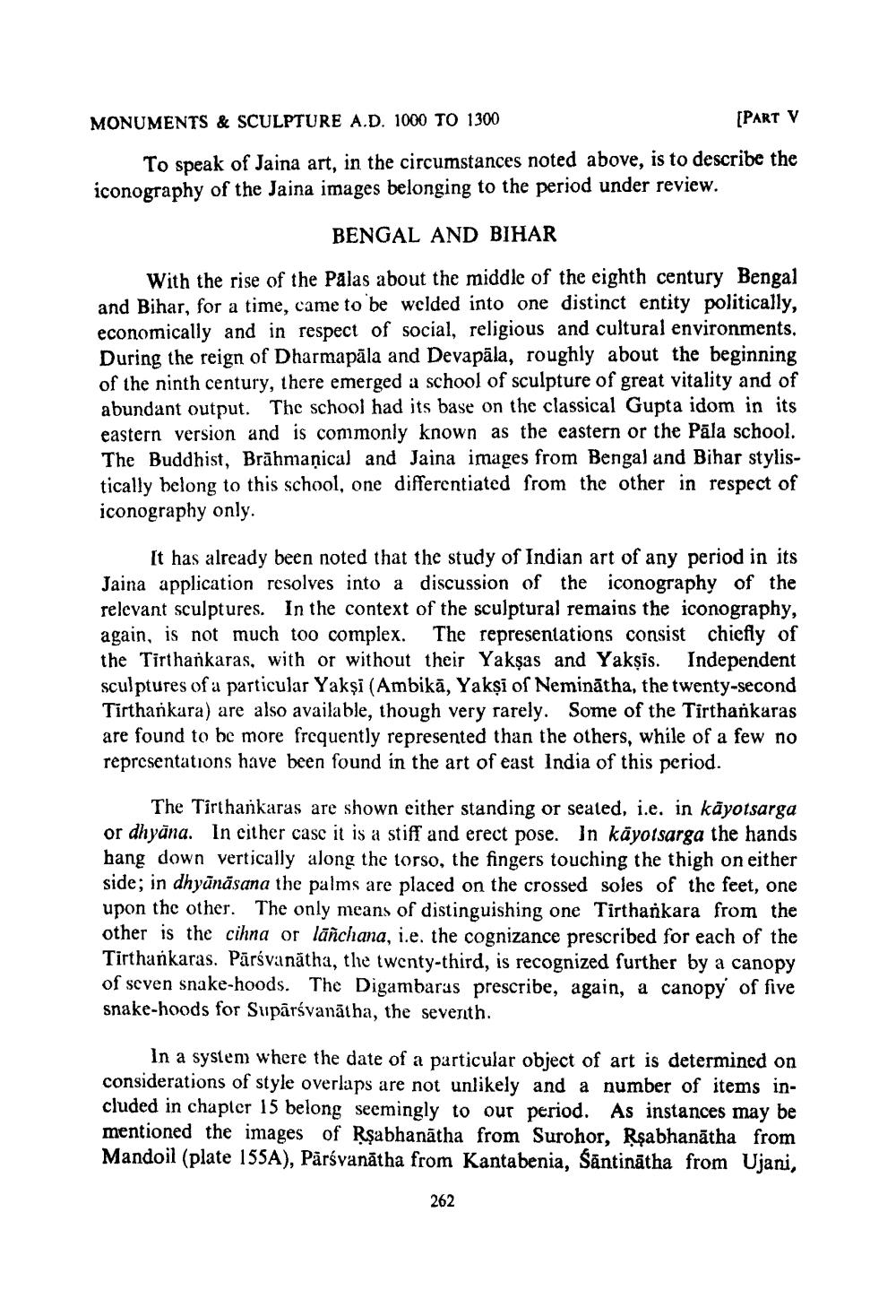________________
MONUMENTS & SCULPTURE A.D. 1000 TO 1300
[PART V
To speak of Jaina art, in the circumstances noted above, is to describe the iconography of the Jaina images belonging to the period under review.
BENGAL AND BIHAR
With the rise of the Palas about the middle of the eighth century Bengal and Bihar, for a time, came to be welded into one distinct entity politically, economically and in respect of social, religious and cultural environments, During the reign of Dharmapāla and Devapāla, roughly about the beginning of the ninth century, there emerged a school of sculpture of great vitality and of abundant output. The school had its base on the classical Gupta idom in its eastern version and is commonly known as the eastern or the Pāla school. The Buddhist, Brāhmaṇical and Jaina images from Bengal and Bihar stylistically belong to this school, one differentiated from the other in respect of iconography only
It has already been noted that the study of Indian art of any period in its Jaina application resolves into a discussion of the iconography of the relevant sculptures. In the context of the sculptural remains the iconography, again, is not much too complex. The representations consist chiefly of the Tirthankaras, with or without their Yakşas and Yaksis. Independent sculptures of a particular Yakşi (Ambika, Yakși of Neminātha, the twenty-second Tirthankara) are also available, though very rarely. Some of the Tirthankaras are found to be more frequently represented than the others, while of a few no representations have been found in the art of east India of this period.
The Tirthankaras are shown either standing or seated, i.e. in kayotsarga or dhyāna. In cither case it is a stiff and erect pose. In käyotsarga the hands hang down vertically along the torso, the fingers touching the thigh on either side; in dhyānäsana the palms are placed on the crossed soles of the feet, one upon the other. The only means of distinguishing one Tirthankara from the other is the cihna or lāñchana, i.e. the cognizance prescribed for each of the Tirthankaras. Pārsvanátha, the twenty-third, is recognized further by a canopy of seven snake-hoods. The Digambarus prescribe, again, a canopy of five snake-hoods for Supārsvanātha, the seventh.
In a system where the date of a particular object of art is determined on considerations of style overlaps are not unlikely and a number of items included in chapter 15 belong seemingly to our period. As instances may be mentioned the images of Rşabhanātha from Surohor, Rşabhanātha from Mandoil (plate 155A), Pārsvanātha from Kantabenia, Sāntinātha from Ujani,
262




